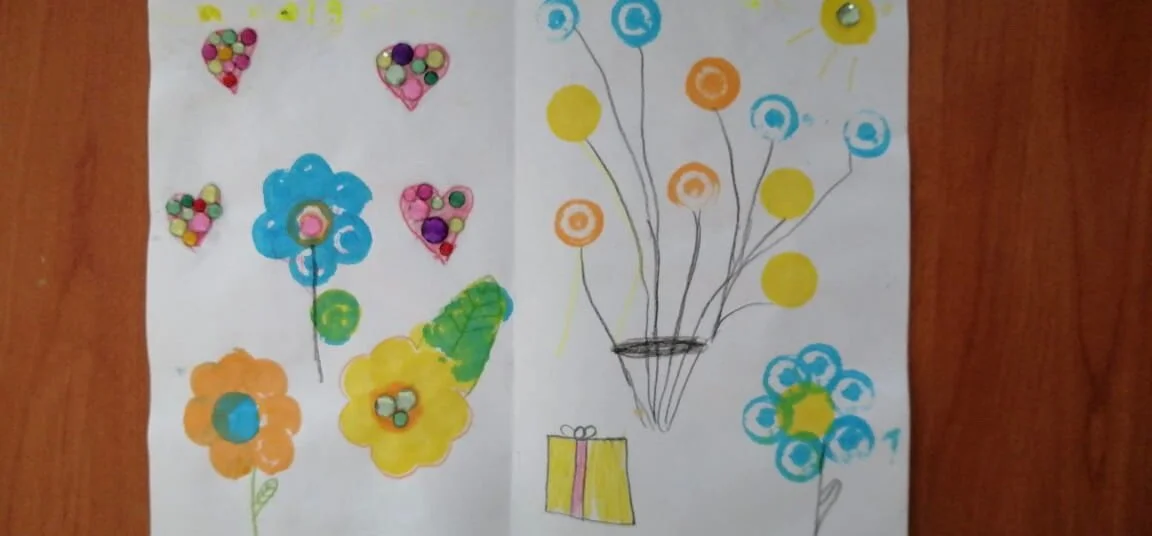Why art? Hands on, intentional, creativity. A few of the tools we use each and every day working with the kids. Art therapy can help manage behaviors, process feelings, reduce stress and anxiety, and increase self-esteem.
It is a tool we use everyday to learn more about each child’s story. It is a non-invasive way to ask questions and learn about their stories. Art expresses dreams, and dives deep into their past experiences. It is a tool that we can use to help pull out the gold but also use as creative insight into strategy and current needs.
Have you ever used art to express yourself when you couldn’t find the words to say? Have you ever sat down with your child, and was surprised by what they shared with you?
Though there is a lot to it, here are some fun tools as baselines. Please note: never assume what your child’s art says (remember people go to school for this, and they too use it as a conversation starter). Always ask. But you can use these tools as a starting point in asking questions. We pulled this list from a few different places to make it easy for you to reference.
—
COLOR:
Blue
This color is associated with calmness, well-being and relaxation. It’s usually the favorite of calm or timid children. In addition, it awakens the sense of creativity and sensitivity in kids.
Red
Red is a color that attracts kids’ attention because of its intensity. You can interpret its use in two different ways: If the child uses it often, he might be a hostile child with feelings of repressed anger. Or if the child uses it moderately, it can describe vitality and energy.
Black
Contrary to popular belief, it’s a color that isn’t always linked to negative or depressed feelings. It actually describes a child with good self-esteem and self-confidence.
Regarding using this color, you also need to look at the intensity of the strokes. If it’s very dark, it could also have other meanings.
Brown
This color represents responsibility . In that sense, when children choose it, they show that they’re diligent and prudent. However, using it excessively shows that they’re overwhelmed by daily activities.
Yellow
Yellow is synonymous with energy, dynamism, joy and sociability. It’s a color that shows happy children. In addition, you see all of the virtues associated with childhood. However, using it frequently in drawings shows problems with authority figures.
Green
Using this color too much can reveal laziness and a certain level of shyness and inhibition. On the other hand, there are also universal meanings for green: hope, tranquility, and a sense of harmony.
Purple
Using this color shows that the child feels melancholic, dissatisfied and restless for some reason. When used with yellow in drawings, it can mean that the child is overwhelmed by some type of pressure.
Pink
Shows a need for love and appreciation and is favored by girls.
DRAWINGS
Happy child: Smiling faces, proportionate, rainbow, sun
Impulsive child: Big figures, no necks, and asymmetrical
Anxious child: Clouds, rain, flying birds, no eyes on figures
Shy child: Short figures, no nose or mouth, tiny figures, arms close to the Boyd
Angry child: Big hands and teeth, long arms, cross eyed
Insecure child: Monstrous figures, tiny heads, no hands
*REF: https://youaremom.com/children/colors-in-childrens-drawings/



